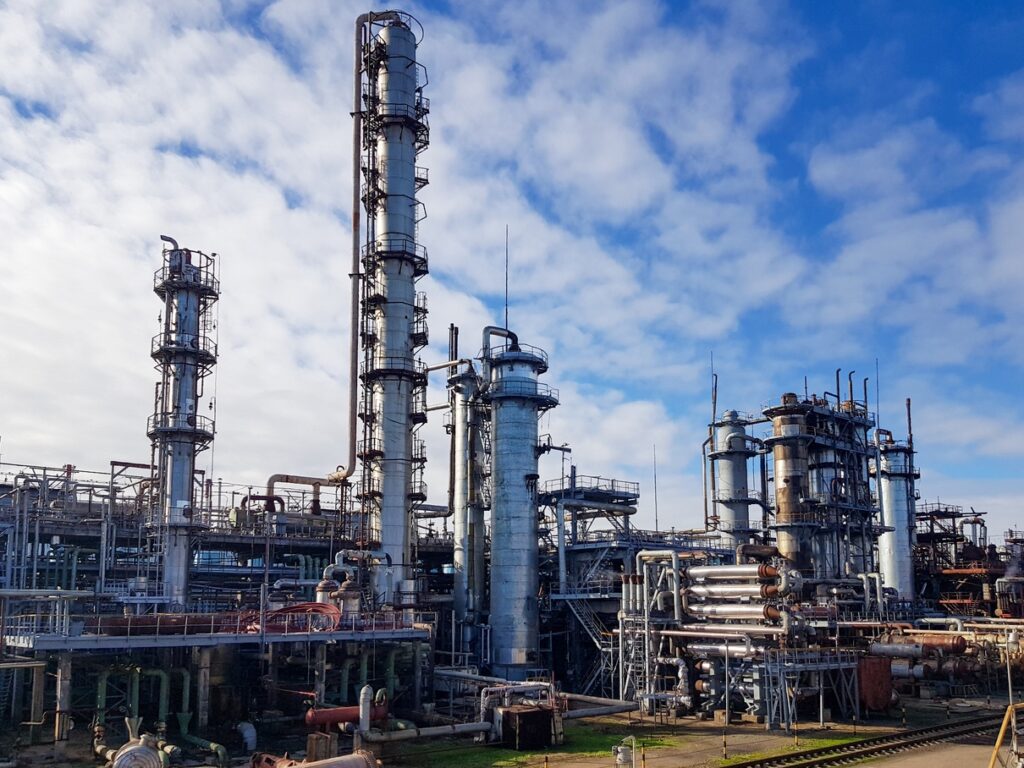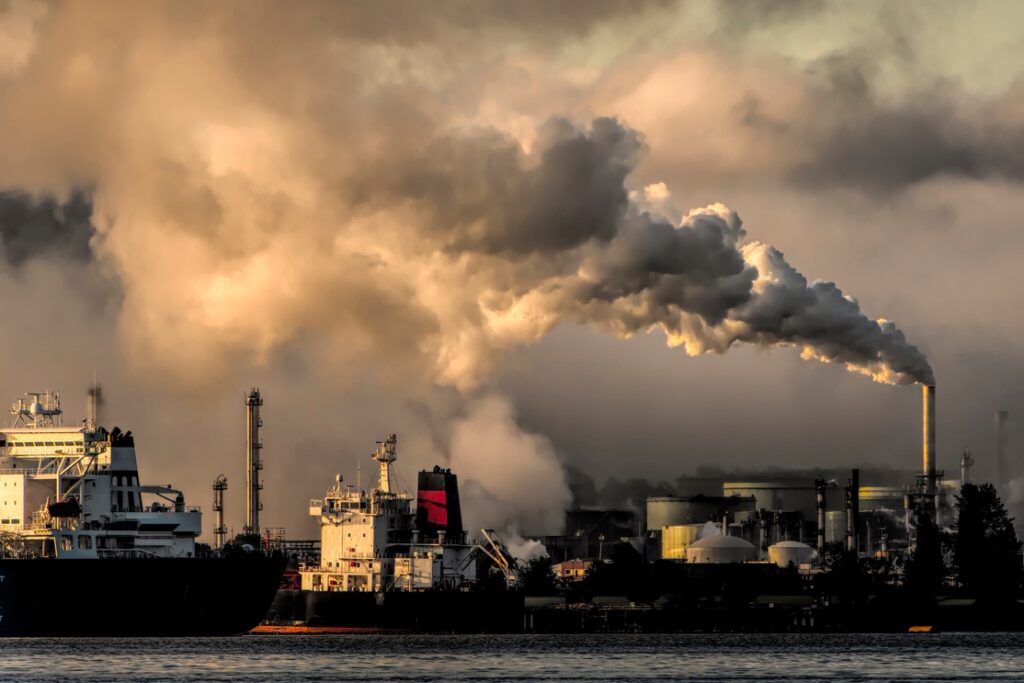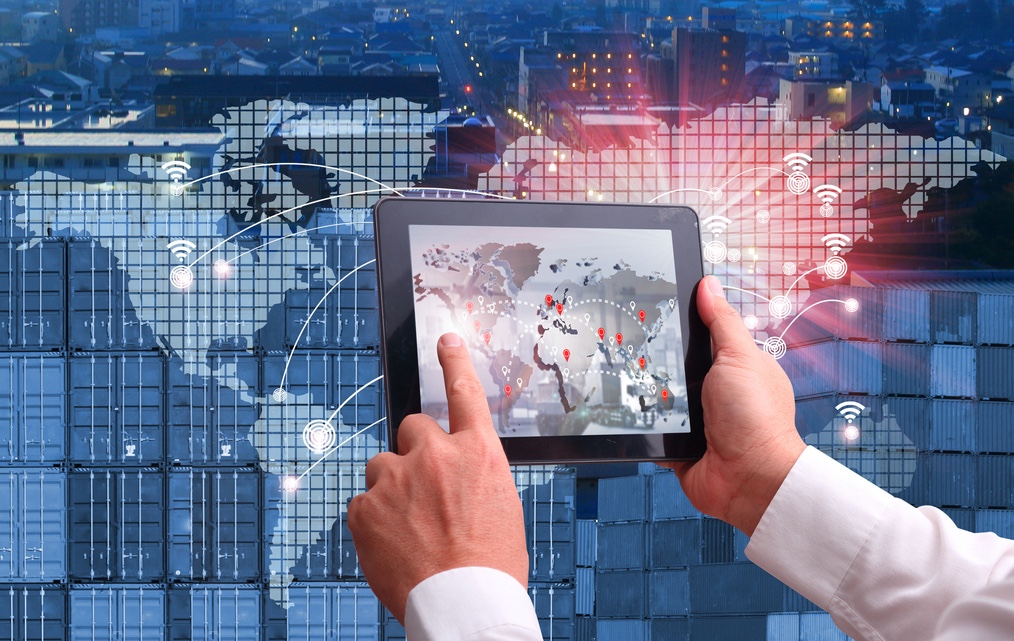Note: The CBTS Annual Meeting will be held at the Bush School in Washington DC, May 23 and 24. More details will be posted on our website.
Green Maritime – Green Methanol

Green Methanol Goals
In January, the dual-fuel vessel, Cajun Sun, successfully completed the first-ever net-zero voyage using bio-methanol. Governments, international organizations, and private industry are all interested in identifying ways to reduce greenhouse gas (GHG) emissions across the maritime sector. Many governments have established goals for reducing carbon emissions by 2050, and the UN’s International Maritime Organization (IMO) over a decade ago adopted a strategy for reducing GHG emissions that includes reducing maritime CO2 emissions on average by 40 percent by 2030. The key to achieving these goals is adoption by industry and it appears several major maritime carriers (e.g., Maersk and Cosco) are investing in ships and the infrastructure needed to supply green fuels.
Despite recent investments, the path to achieving domestic and international GHG emission goals remains uncertain and will depend on the development of innovative technologies and alternative fuels that reduce carbon emissions. Researchers are looking at the costs and benefits of many alternative fuels including ammonia, liquified natural gas, hydrogen, electricity, wind, but recent developments suggest green methanol is a potentially viable alternative fuel.
Green Methanol
Given that several nations in Asia and Europe are actively developing the capacity to produce and use green methanol, their experiences add to our understanding of the hurdles the maritime industry faces as they attempt to adopt a new fuel. Methanol, a simple, colorless, single-carbon liquid has been produced for centuries and serves as a raw material for many compounds in the chemical industry. While green and conventional methanol are chemically identical, the “green” designation depends on the process and feedstock used to make it.
A fuel is “green” if demonstrates a 65-95 percent reduction in GHG emissions on a lifecycle basis compared to fossil fuel. Green methanol is produced using processes that emit minimal or zero levels of GHGs. Methanol produced using sustainable biomass (e.g., forestry and agricultural waste, byproducts, biogas, sewage, municipal solid waste, black liquor from the pulp and paper industry) is often called renewable methanol. Methanol produced using carbon dioxide and hydrogen produced from renewable electricity is usually called e-methanol. In this note, both are lumped under the term “green.”
Currently, one-third of all methanol produced globally uses coal (the primary feedstock for Chinese production), natural gas is used as a feedstock for almost two-thirds, and less than one percent uses biomass as feedstock. Green methanol costs 45 percent more to produce compared to conventional methanol. On an energy content basis, green methanol can be almost double or triple the cost of standard maritime fuels. This is a significant difference given that fuel typically represents 50 percent or more of a ship’s operating costs.
Given that green methanol is more expensive than standard maritime fuels, it is fair to ask why carriers would invest in the dual fuel engines and infrastructure needed to use green methanol. One reason is greater visibility of their role in meeting GHG reduction goals. Another reason is that investors are showing greater interest in a range of environmental, social, governance issues, and companies’ efforts to reduce emissions serve as one measure of their commitment to environmental goals. As a result, officials and investors are focusing on how carriers are attempting to address fuel efficiency and carbon emissions goals. Another reason may be that carriers are willing to risk some of their pandemic profits on what otherwise might be considered speculative projects.
Concern about fuel cost is significant and over time will drive carriers’ decisions about their fueling choices and the investments required to ensure their operations are efficient. Given the lower energy content of methanol, ships will need to double the size of their fuel tanks to maintain the same range as they have with conventional fuels. Methanol is a workable candidate because it is already used as a maritime fuel and its safety and storage issues are understood. Regulations (e.g., blending mandates like those used in U.S. gasolines, carbon taxes, etc.), and policies aimed at increasing the use of green methanol may help make it become more competitive, but in the long run its cost compared to other fuels will remain a concern.
Scalability
If green methanol is to become commercially viable and globally available, industry needs to make significant investments. Scalability is the key to green methanol’s future as an alternative fuel. Building the industry to a commercial scale will require investments in technologies that increase volumes, lower costs, and ensure sufficient renewable biomass feedstocks are adequate to support the volumes needed as demand for cleaner fuels in maritime and other industries increases.
Growing green methanol market share will take years and will require firms to ensure they have consistent, renewable feedstocks to produce the volumes needed. Repeating these investments globally will take decades but will also provide opportunities for researchers to address challenges that could yield new technologies, additional feedstock supply chains, and increase production and lower costs in the long run. As with most changes, the path to achieve GHG emission reduction goals will not be easy or quick.
Other Considerations

Green methanol storage tanks and pipelines and procedures for moving this fuel are similar to conventional fuels, but three major differences exist. The first is methanol is more corrosive than fossil fuels, the second is methanol vapor flammability is greater than fossil fuels, and third is methanol easily absorbs moisture which degrades its value as a fuel.
Corrosion can lead to storage failures, increased safety concerns, and, in port environments, fuel degradation. ethanol’s corrosive properties are well known and will factor into investments in production and storage facilities and in the cost of systems used on ships designed or retrofitted to use green methanol.
Methanol vapor’s flammability at greater concentrations means storage tanks need vapor controls, greater fire suppression capacity, and features that limit the release of toxic vapors. Methanol’s upper flammability limit by volume is 36 percent compared to diesel fuel which is 7.5 percent. The upper flammability limit of a substance is the highest concentration of vapor in air that can produce a fire. The higher limit means methanol vapor could ignite and burn inside tank vapor space in the presence of an ignition source. This is one reason a blanket of nitrogen is used to control vapor levels in some methanol storage.
Unlike fossil fuels, methanol absorbs moisture from the air. This characteristic is a critical concern in storage tanks and onboard ships. As with methanol’s other characteristics, its affinity for absorbing moisture is well known and will affect the methanol’s commercial viability.
Conclusion
Meeting GHG emission goals and addressing investors’ concerns are drivers of the maritime industry’s growing interest in green methanol as fuel. However, given its small market share and the technical challenges it faces, it is clear this fuel’s success will depend on significant technical advances and a global commitment to ensure production reaches adequate levels. Based on the growing number of announcements related to green methanol, firms are revealing their willingness to explore the potential for overcoming cost and technical hurdles and signaling the comparative advantage of green methanol over other green fuel options.
The End of TradeLens – What Happened and What’s Next?

The gap between the promise of blockchain and digitization technologies and effective execution can be significant even when well-funded and incentivized industry partners are involved. Global-scale digitization, even across organizations in the same industry, requires global standards, which in turn require both extensive funding and cooperation. So goes the story of TradeLens and the lessons that it demonstrated regarding efforts in digitization and required coordination. In August 2018, IBM and A.P. Moller–Maersk made a joint press release about the piloted and operational ‘blockchain technologies’ being brought to the world under the TradeLens banner. This roll out had substantial support from well established companies in their respective industries teaming up to give critical mass to what was advertised as a synergistic and revolutionary platform that could rapidly introduce digitalizing change to centuries’ old practices in ocean freight and the many allied industries. Ninety four organizations had been enlisted to participate by the time of the press release1.
TradeLens uses IBM Blockchain technology as the foundation for digital supply chains, empowering multiple trading partners to collaborate by establishing a single shared view of a transaction without compromising details, privacy or confidentiality. Shippers, shipping lines, freight forwarders, port and terminal operators, inland transportation and customs authorities can interact more efficiently through real-time access to shipping data ad shipping documents, including IoT and sensor data ranging from temperature control to container weight.
This contrasts with the following, December 2022, statement posted on the TradeLens website:
TradeLens was founded on a bold vision for global supply chain digitization as an open and neutral industry platform. This vision centered on the ability to enable true information sharing and collaboration across a highly fragmented industry globally.
Unfortunately, such a level of cooperation and support has not been possible to achieve at this point in time and A.P. Moller – Maersk (Maersk) and IBM have announced the discontinuation of the TradeLens platform.
We would like to express our sincere thanks for those that interacted with TradeLens since 2018. We are honored to have been part of your digitization journey.
And as stated by Rotem Hershko2, Head of Business Platforms at A.P. Moller-Maersk, “TradeLens was founded on the bold vision to make a leap in global supply chain digitization as an open and neutral industry platform. Unfortunately, while we successfully developed a viable platform, the need for full global industry collaboration has not been achieved. As a result, TradeLens has not reached the level of commercial viability necessary to continue work and meet the financial expectations as an independent business.”
These news releases represent the bookends of a chapter in trade digitization. In the world
of supply chain and ocean freight logistics, TradeLens was a significant effort. Though the
driving investment to sustain the TradeLens effort came from IBM and Maersk, the effort did not fail because of lack of a broader set of organizational or business interests in the TradeLens ecosystem. Ocean trade and logistics industries were well represented among TradeLens participants.
One might question whether the technology itself is viable, but, it is. IBM originally developed Hyperledger Fabrics for implementation of permissioned blockchains for business and other uses. When IBM open-sourced Hyperledger Fabrics through the Linux Foundation it sought wider contributions and development. As a result, the technology remains a good basis for implementing any permissioned blockchains in a business environment. The questions remain, what happened and what will happen in the aftermath of TradeLens?
Freight and logistics expert, Thomas Ananjevas, in an article for the Supply Chain Services Bureau3, observes that, in general, digital freight platforms have offered too little improvement from the status quo. This could be translated, in the case of TradeLens, into too little benefit relative to cost. Lower than expected returns likely influenced IBM’s and Maersk’s awareness of the difficulty to continue funding and to attract funding from others to sustain the massive digitization effort that TradeLens was.
Fadi Aboualfa, argues in a 2023 World Economic Forum article4, that the “industry needs to scale back its ambition and begin to showcase the benefits of digital assets and distributed networks.” Fadi also points out the importance of linear development and progress toward a goal of decentralized digitization, acknowledging the ‘antiquated’ intermediaries involved in clearance of global financial transactions. He contends that it is not at all realistic to expect to leapfrog or exclude the intermediate institutions, parties, or processes.
The Digital Container Shipping Association (DSCA) and it effort to standardize bills-of-lading serves as a segue to what comes next in the freight and trade digitization space. The DCSA was formed in Amsterdam in 2019, with charter and funding by nine of the world’s larger ocean freight operators, including Maersk. So, from the beginning, there is wider representation of direction and ‘ownership’ of the organization, when compared to an effort lead by Maersk and IBM. Additionally, the DCSA openly acknowledges a prolonged and likely realistic timeline for accomplishing the labor and time intensive process of standardizing electronic bills of lading for use by global ocean freight operators. A pledge signed by the leadership of the nine charter firms (Evergreen, Maersk, MSC, CMA-CGM, Hapag-Lloyd, Yang Ming, Zim, ONE, and HMM) establishes a 2030 deadline for harmonization and delivery of an interoperable and globally acceptable/functional electronic bill of lading (eBL).
The eBL is one of the most important documents in ocean freight, being handled and processed by numerous parties across numerous organizations and jurisdictions around the world. It takes a long time and a great deal of effort to work through standards for such a document. The eBL touches the entire trade ecosystem, and standards for it reflect some cooperation, compromise and utility across the whole ecosystem in one electronic document. There is a great deal of complexity in this, and complexity can stifle efficient implementation of innovative change- think TradeLens. Standard-setting work is arduous in all cases, but can really bear fruit after it has been done or at milestones in its progression. It requires commitment and adequate representation, and is an important precursor to later steps in digitization.
Finally, two companies have stepped into the gap left by the TradeLens wind down, CargoX and CEBS Worldwide. CEBS is a global integrator of business solutions, and formerly an integrator for TradeLens. CargoX brings a blockchain document transfer (BDT) system into play for electronic document exchange. Satish Swaroop, the CEO of CEBS Worldwide told Sourcing Journal that he expects 50% of TradeLens customers to be migrated to the products/platforms of the joint venture between CEBS Worldwide and CargoX, by the second quarter FY 2023. Whether they will share a similar fate as TradeLens remains to be seen.
Digitization proceeds apace, almost as an inevitability, but the TradeLens experience provides important lessons for future efforts. First, the adoption of viable innovations is complex and rarely linear, especially on a global scale. Second, a technology’s value proposition is important, but so is the fundamental consideration that the benefits must outweigh the costs sooner rather than later. The business case for TradeLens, to be ‘underwritten’ by increasing participation, investment, and presumably benefit across ocean freight and allied companies, was apparently a difficult one, that IBM and Maersk chose to wind down. As for the future, perhaps smaller efforts focusing on a smaller set of willing parties in ocean freight, across the globe, will find ways to deliver the promise originally seen in the TradeLens effort. Alliances such as the DCSA that focus on fundamental standardizations, intermediary steps like harmonizing bills of lading will also make important strides toward digitization of ocean freight. Perhaps this progression will offer that magic equilibrium where business viability is made possible by progressive adoption of standards. There is still a great deal of opportunity in distributed computing and networks!
1. Press release: Maersk and IBM introduce TradeLens blockchain shipping solution. (2018, Aug 09). Dow Jones Institutional News Retrieved from http://proxy.library.tamu.edu/login?url=https://www.proquest.com/wire-feeds/press-release-maersk-ibm-introduce-tradelens/docview /2086064615/se-2?accountid=7082
2. Cecere, L (2022, December 5). TradeLens Discontinues Operations. Why You Should Care. Forbes. https://www.forbes.com/sites/loracecere/2022/12/05/tradelens-discontinues-operations-why-you-should-care/?sh=245a75584cec
3. Ananjevas, T (2022, August 29). Why are digital freight forwarders failing? Supply Chain Services Bureau. https://scsbureau.com/2022/08/29/why-are-digital-freight-forwarders-failing/
4. Aboualfa, F (2023, January 10). Why distributed ledger technology needs to scale back its ambition. World Economic Forum. https://www.weforum.org/agenda/2023/01/distributed-ledger-technology-scale-back-davos2023/
5. Taylor, G. (2023). Can newcomers succeed where TradeLens failed? Sourcing Journal (Online), Retrieved from http://proxy.library.tamu.edu/login?url=https://www.proquest.com/trade-journals/can-newcomers- succeed-where-tradelens-failed/docview/2780558349/se-2?accountid=7082
This material is based upon work supported by the U.S. Department of Homeland Security under Grant Award Number 18STCBT00001. However, the views and conclusions contained in this document are those of the authors and should not be interpreted as necessarily representing the official policies, either expressed or implied, of the U.S. Department of Homeland Security.

